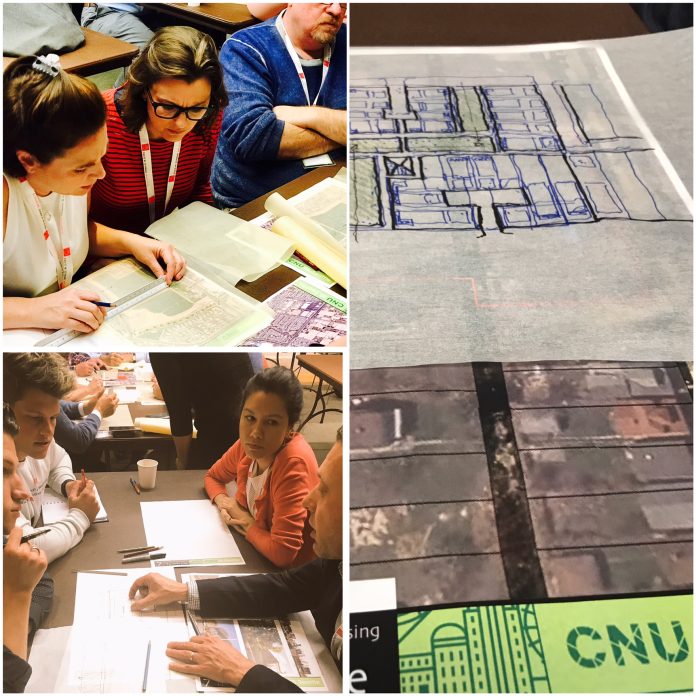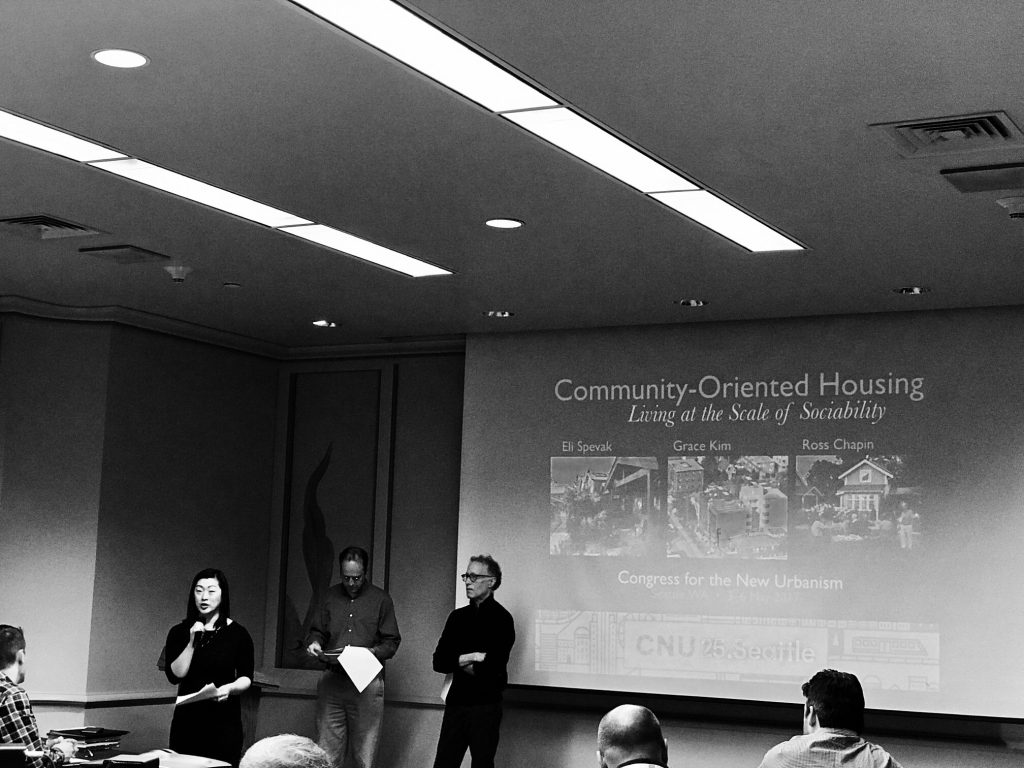About fifty Congress for the New Urbanism conference attendees came together to learn about Community-Oriented Housing on the first full day of CNU25. The workshop, subtitled “Living at the Scale of Sociability,” was designed to engage developers, architects and other building professionals, in a hands-on lesson about creative, community-centered housing solutions.
The session was led by Ross Chapin, Principal, Ross Chapin Architects, Grace Kim, Founding Principal, Schemata Workshop, and Eli Spevak, Owner, Orange Splot LLC. The Urbanist spoke to Grace Kim, of Schemata Workshop, who referred us to the recent Boston Globe story, The biggest threat facing middle-age men isn’t smoking or obesity. It’s loneliness. “Building community is essential for our cities and neighborhoods and for the health of American people,” Kim explained.
From the CNU program, the session is described as follows:
Between developer-driven housing and resident-driven cohousing lies a market that is not being tapped. Across all age groups there is a rising desire for community-oriented living, especially in walkable neighborhoods, yet the demand is left unmet.
On one hand, developers of incremental small-scale residential projects can be skittish about getting involved with community dynamics, leaving the new residents on their own to figure out the community part. On the other hand, pioneering cohousing wannabees are trudging through a grueling process of land acquisition, entitlement, financing, site planning, design and construction–with many falling to the wayside before opening day.
There is a middle path to delivering and engaging healthy community housing.
Creating Pocket Neighborhoods
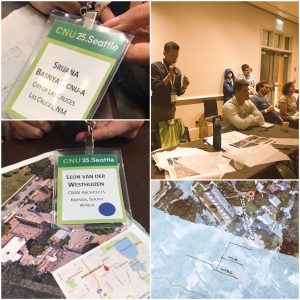
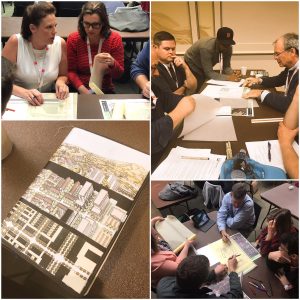
The most exciting part of the workshop was listening to the complex, fruitful and lively dialogues between attendees. They were given a parcel of land to develop and less than an hour to discuss and sketch a housing community. Locations included Bainbridge Island, WA, Detroit, MI, rural Georgia, Arizona suburbia, and more! Many of the groups focused on the concept of Pocket Neighborhoods. According to the website backing the concept, “pocket neighborhoods are clustered groups of neighboring houses or apartments gathered around a shared open space–a garden courtyard, a pedestrian street, a series of joined backyards, or a reclaimed alley–all of which have a clear sense of territory and shared stewardship.”
My favorite project focused on preserving a fantastic building in Minnesota and incorporated live-work spaces and attached duplexes.
CNU25
CNU25 continues through Saturday. Womxn are encouraged to join the facebook group CNU Urbanistas and follow #CNUUrbanistas on twitter, for special events, meet ups and valuable information.
Seattle YIOBY Tweets
Hey @UrbanistOrg , couldn't resist this Community-Oriented Housing "Living at the Scale of Sociability" workshop! #cnu25 #cnuurbanistas pic.twitter.com/9PUC7abSOu
— More Housing, More Parks (@HousingAndParks) May 3, 2017
"People are feeling isolated and there's increased death risks" – Grace Kim #CNU25 #communityhousing cc: @UrbanistOrg @cnunextgen pic.twitter.com/wunKVvOz8Q
— More Housing, More Parks (@HousingAndParks) May 3, 2017
Pocket Neighborhoods, Shared Kitchens, The Commons, connections to public health for co-housing #cnu25 @cnunextgen "product is scarce"! pic.twitter.com/lBJn8aye67
— More Housing, More Parks (@HousingAndParks) May 3, 2017
Courtyard, common house, intergenerational families, roof farm – @GraceKimArch #cnu25 Capitol Hill Urban Cohousing pic.twitter.com/0urbG8S4Tn
— More Housing, More Parks (@HousingAndParks) May 3, 2017
'Co-housing fits in weird lots, it is for red & blue states, affordable housing, transitional housing, renters, all incomes' #cnu25 pic.twitter.com/9ndyJvaYzv
— More Housing, More Parks (@HousingAndParks) May 3, 2017
Q: Do the codes help facilitate the community aspect? Commons? #cnu25 @cnunextgen "get gardners to buy!" pic.twitter.com/5XkbuN3owO
— More Housing, More Parks (@HousingAndParks) May 3, 2017
breakout sessions got in-depth fast! Engineers, architects community housing (sites: Bainbridge, Georgia, Ohio, Detroit) #cnu25 pic.twitter.com/pUqm2pgqVX
— More Housing, More Parks (@HousingAndParks) May 3, 2017
~11 of 50 people in this room are women #CNUUrbanistas #communityhousing @cnunextgen @NewUrbanism @UrbanistOrg pic.twitter.com/4LusnmBcix
— More Housing, More Parks (@HousingAndParks) May 3, 2017
Minnesota location! I want to live in this one! Duplexes! Work / Live! Yay! #cnu25 @cnunextgen @NewUrbanism pic.twitter.com/kw5tnhIqI3
— More Housing, More Parks (@HousingAndParks) May 3, 2017
Hearing about a diversity of scale of housing #communityhousing @cnunextgen @NewUrbanism @GraceKimArch @UrbanistOrg #CNU25 pic.twitter.com/6aD1SdcE3q
— More Housing, More Parks (@HousingAndParks) May 3, 2017
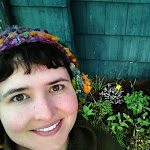
Laura Loe
Laura Loe is an educator, musician, and gardener from Colombia/NY/LA/Chicago who has lived in Seattle since 2009. Laura is a board member for Be:Seattle, an organization building the power and leadership of renters and people experiencing homelessness to fight displacement.


